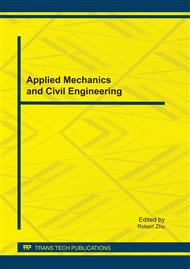p.134
p.140
p.144
p.149
p.154
p.159
p.167
p.175
p.181
Seismic Response Reduction of Cable-Stayed Bridge with Viscous Dampers
Abstract:
For floating system cable-stayed bridge, the longitudinal displacement of girder and moments of towers are very large when strong earthquake happens. The dampers installed between girder and towers in longitudinal direction can reduce efficiently displacement of the girder and moments of the towers induced by longitudinal seismic waves. Using spatial finite element model and time history analysis method, the influences of design parameters of viscous damper on seismic responses of cable-stayed bridge are studied in detail. The results of study show that, with the damping constant increasing, the longitudinal displacement of girder and moment of tower decrease, and the forces of damper increase. With velocity exponent increasing, the longitudinal displacement of girder and moment of tower increase, and the force of damper decrease. So, when determining the design parameters of damper, the cost of dampers, difficulty of construction and seismic reduction effects should be considered together.
Info:
Periodical:
Pages:
154-158
Citation:
Online since:
October 2011
Authors:
Price:
Сopyright:
© 2012 Trans Tech Publications Ltd. All Rights Reserved
Share:
Citation:


